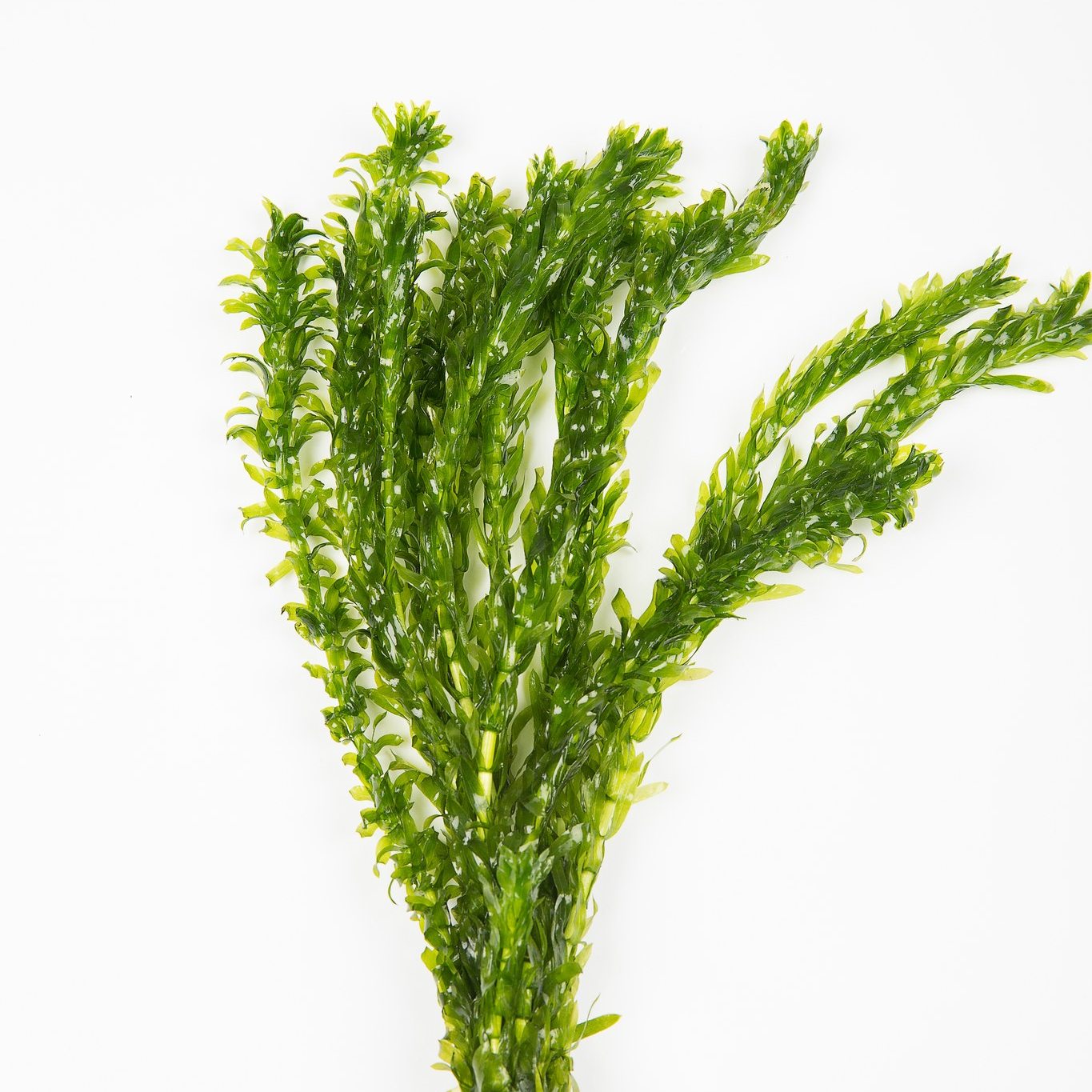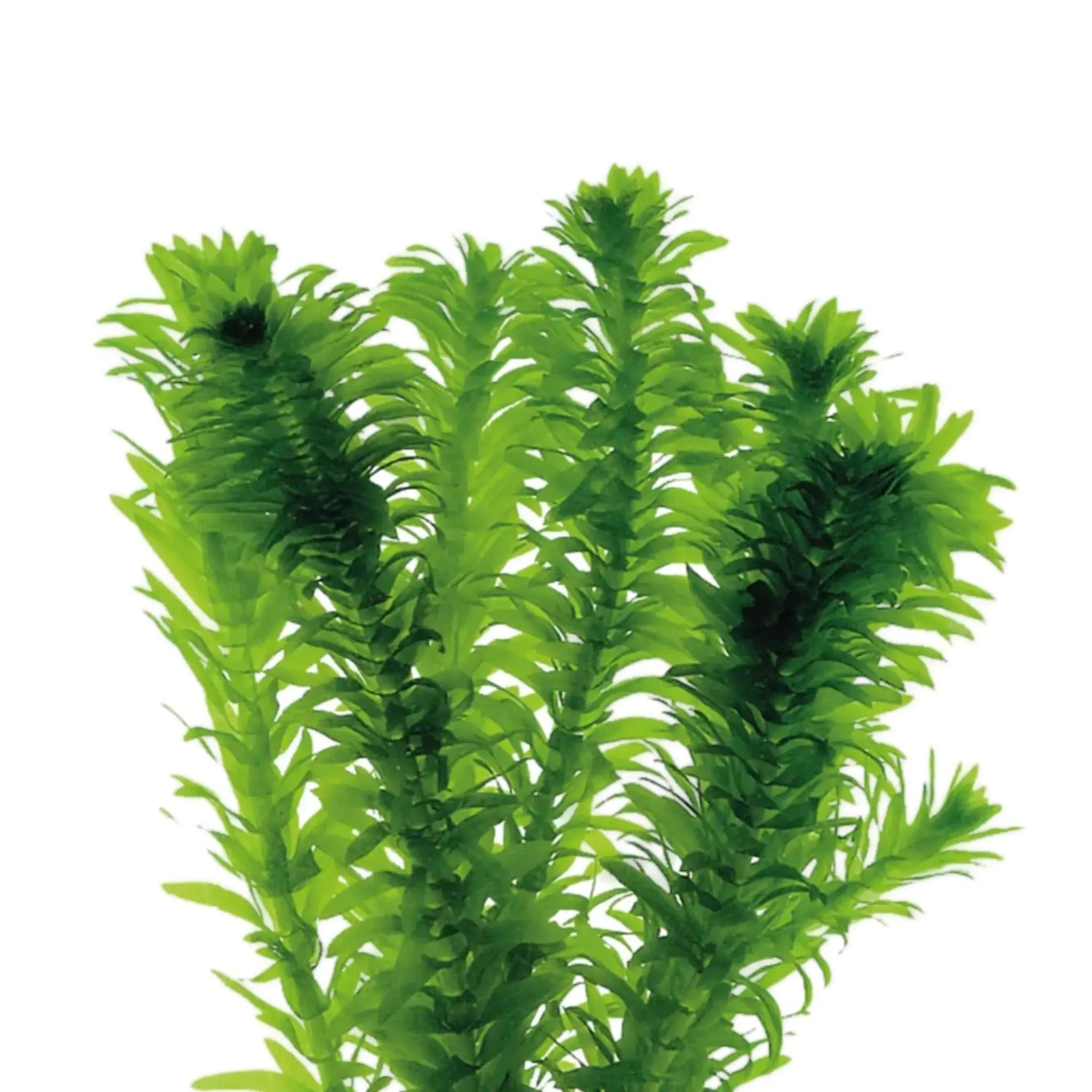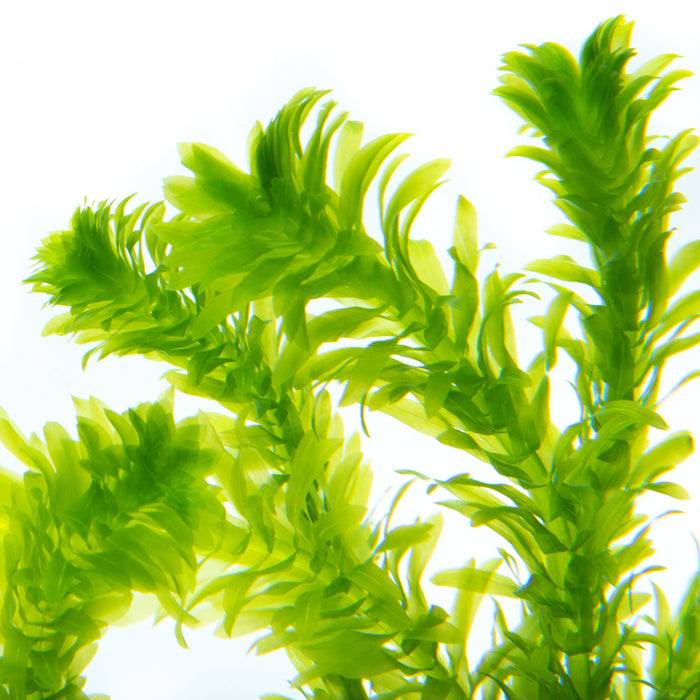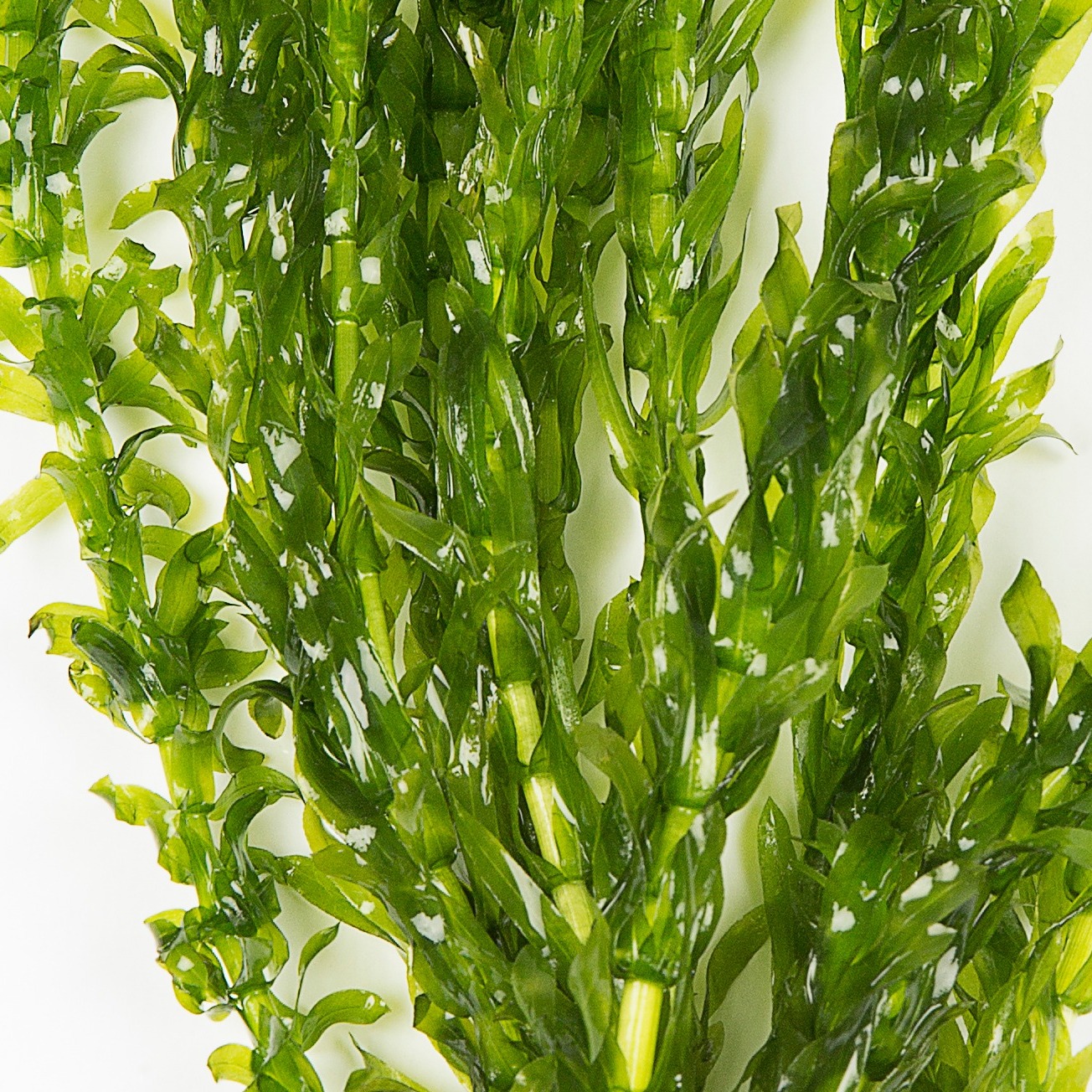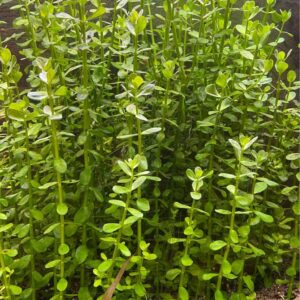$4.75
Elodea densa, commonly known as Brazilian waterweed, is a popular aquatic plant often used in aquariums and water gardens. It is native to South America but has spread to other parts of the world, including North America, where it is sometimes considered an invasive species. Here’s a detailed description of Elodea densa:
Appearance:
-
Leaves: Elodea densa has slender, narrow leaves that grow in whorls around the stem. The leaves are typically bright green and can appear somewhat translucent, giving the plant a soft, delicate look. Each whorl consists of 3 to 5 leaves, and the leaves themselves are usually 1–2 cm long.
-
Stems: The plant has long, trailing stems that can reach up to 10 feet (3 meters) in length under optimal conditions. The stems are somewhat soft and flexible, and they will often float or drape along the substrate if not anchored.
-
Roots: While the plant has roots, they are not particularly prominent or deep, as Elodea densa often relies more on floating or growing in the water column.
Growth Habit:
-
Fast-Growing: One of the most defining characteristics of Elodea densa is its rapid growth. It can grow upwards of 1 foot (30 cm) per month under ideal conditions, especially when given high light and nutrient availability.
-
Spreading: It spreads quickly, often forming dense mats on the surface of ponds, lakes, or aquariums. This rapid growth can help to outcompete other plants in the wild.
-
Floating and Submerged: In the wild, Elodea densa often floats or becomes submerged in deeper waters, and it can grow both underwater and at the surface. In aquariums, it is typically kept submerged.
Habitat:
-
Native Range: Native to South America, primarily in Brazil, it has since spread widely across the globe, becoming common in temperate and tropical regions.
-
Water Conditions: Elodea densa thrives in a wide range of water conditions, preferring slightly acidic to neutral pH (6.0–7.5) and temperatures between 59°F and 77°F (15°C to 25°C). It can tolerate cooler temperatures and even low light conditions.
-
Substrate: It doesn’t require a rich substrate, as it can grow in water where nutrients are available either in the water column or from the substrate.
Care Requirements:
-
Lighting: It does best in bright lighting, although it can tolerate moderate light. Insufficient light can lead to slower growth and weaker, less vibrant foliage.
-
Water Conditions: It prefers clean, well-oxygenated water. It does well in both soft and moderately hard water, but like most aquatic plants, it does best with stable water parameters.
-
Fertilization: Elodea densa can absorb nutrients both from the water column and the substrate, so regular fertilization can help promote healthy, fast growth.
-
Water Movement: It prefers calm water, but it can tolerate some moderate flow, which helps oxygenate the plant and prevent it from becoming too stagnant.
Out of stock
Description
Egeria Densa (Elodea Densa)
Common Issues:
-
Overgrowth: In both aquariums and outdoor water bodies, Elodea densa can quickly overtake a space, potentially leading to issues with water flow, light penetration, and oxygenation in closed systems.
-
Invasiveness: In some areas, Elodea densa is considered invasive, as it can disrupt local ecosystems by outcompeting native plants and affecting aquatic habitats.
Uses in Aquariums:
-
Water Oxygenation: Elodea densa is a great plant for improving water quality in aquariums by helping to oxygenate the water, which benefits fish and other aquatic life.
-
Natural Filter: Its rapid growth helps absorb excess nutrients (such as nitrogen and phosphates) from the water, reducing the likelihood of algae blooms.
-
Background or Midground Plant: Because of its long, trailing growth habit, it is often used as a background plant in larger aquariums or as a midground plant in smaller setups.
-
Easy Care: It is often recommended for beginner aquarists because of its hardy nature and ability to grow in a wide range of conditions.
Propagation:
-
Cuttings: Elodea densa is easily propagated by cutting a healthy stem and replanting it or allowing it to float. The cuttings will quickly develop roots and continue growing.
-
Natural Spread: In the wild, the plant can spread by releasing small fragments that grow into new plants, contributing to its invasive nature.
Overall:
Elodea densa is a highly adaptable and fast-growing aquatic plant that serves many roles in aquariums, from improving water quality to providing oxygenation. While it is a low-maintenance plant that is easy to care for, its rapid growth can be a double-edged sword, making it essential to monitor its spread in aquariums and water gardens.
Additional information
| Weight | .2 kg |
|---|

